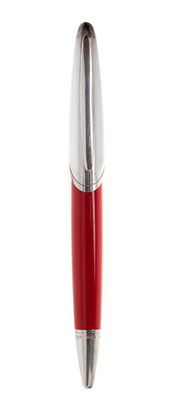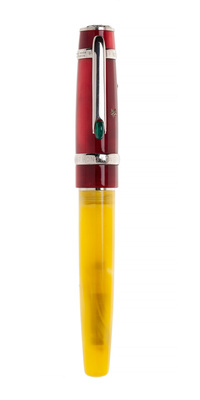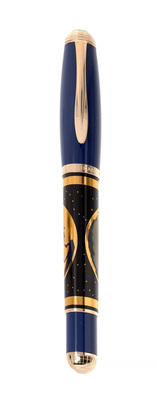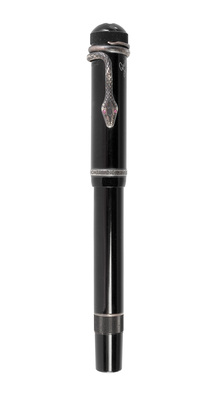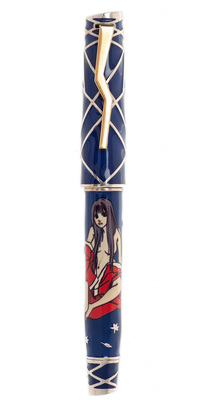Pen collecting and the art of calligraphy.
The style that a fountain pen gives off is not comparable to that of a ballpoint pen, the experience of writing by hand and seeing how the ink flows on the paper and the text acquires a unique character, turn that moment into something creative and very intimate.
Blanco Sánchez, in his work ‘Arte de la Escritura y de la Caligrafía’ (1902), defined Calligraphy as“the art of beautifully representing oral sounds by means of graphic signs, or the only beautiful graphic art of the word”.
Calligraphy is an art form that uses ink and brush to capture the soul of words on paper”. Kaoru Akagawa
If we are not one of those people who have the delightful habit of signing our most important documents with a fountain pen, we are sure that in our memory there are images of offices, almost always of liberal or intellectual professions, where there is always the silhouette of a pen that stands out among the documents, legacies and various objects that fill the space.
Office fountain pens give an image of respect and packaging and, when you look at them, you think about what important document is about to be used.
As in all the arts, pen collecting needs study, specialization and systematization to give a greater meaning to the collection and, thus, provide it with value.
How to start? If we already have a small collection, we should ask ourselves which pens attract us the most: a certain brand, a certain color, the loading systems, the country of origin or the period in which they were produced, the materials, … There are many criteria to start and organize a collection of fountain pens.
By manufacturer. Organizing a collection in chronological order from a single manufacturer provides insight into the development of the pen from that manufacturer’s perspective. If you use this criterion, Montblanc could be an excellent example.
By period. If we are interested in a particular decade, the 1950s, for example, or the war years, then collecting pens from that era will help us to set the mood of an era. Collectors with these inclinations often like to collect advertising material, ephemera and display material.
By model. Some collectors prefer to limit their collection to a single model – the Parker 51 is a big favorite, as are the Parker 75 and the Sheaffer Targa.
By color. Some collectors are fascinated by the marbled patterns and colors made by Conway Stewart, Swan and other manufacturers.
By country of origin. Some lovers of fountain pen collecting are fascinated by specializing in pens from a particular country.
For special or limited editions. It is something much more current and offered by most firms, special editions of their models or numbered limited editions as the future of the most important collections of pens.
The best fountain pen brands have developed this writing accessory into a collector’s item. It seems very evident that technology has given way to the traditional methods of writing, however, fountain pens continue to be one of the best-selling luxury items worldwide, because fountain pens are a symbol of distinction and passion for the traditional.
Among the best fountain pen brands we find houses that have revolutionized writing, with patents that may seem obvious today, but that at the time were a revolution.
So, let yourself be guided by your personal taste and the possibilities of your pocket and start your collection.

